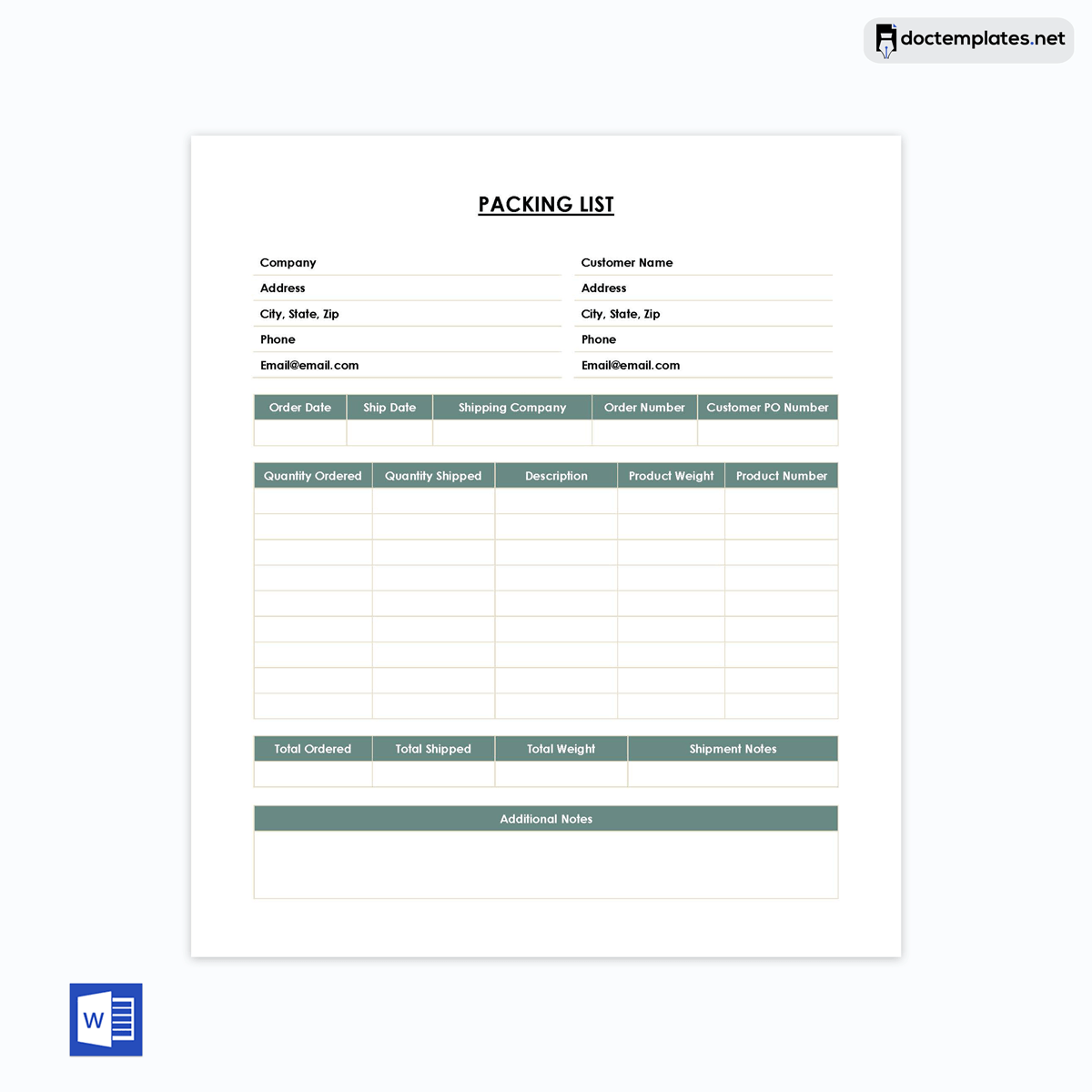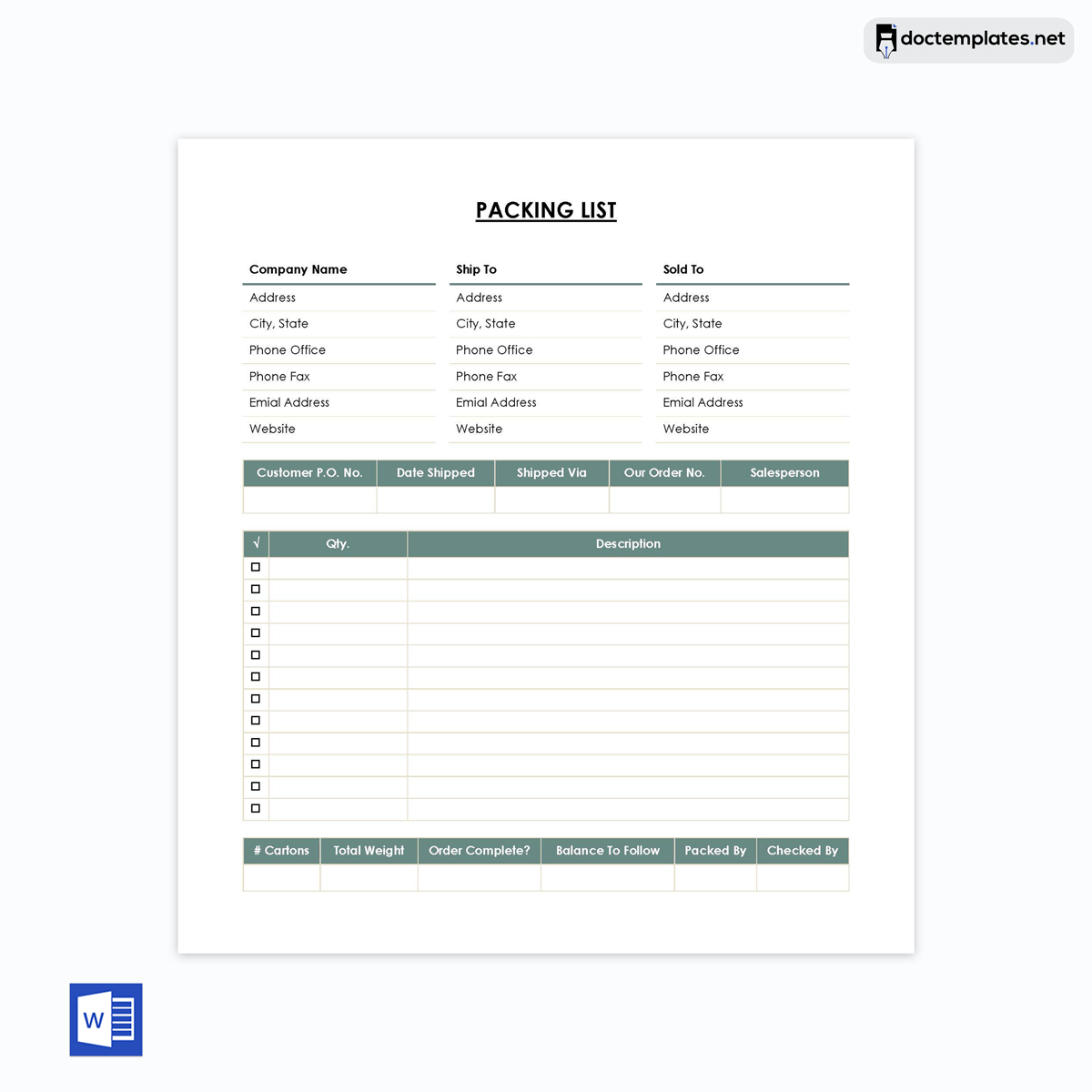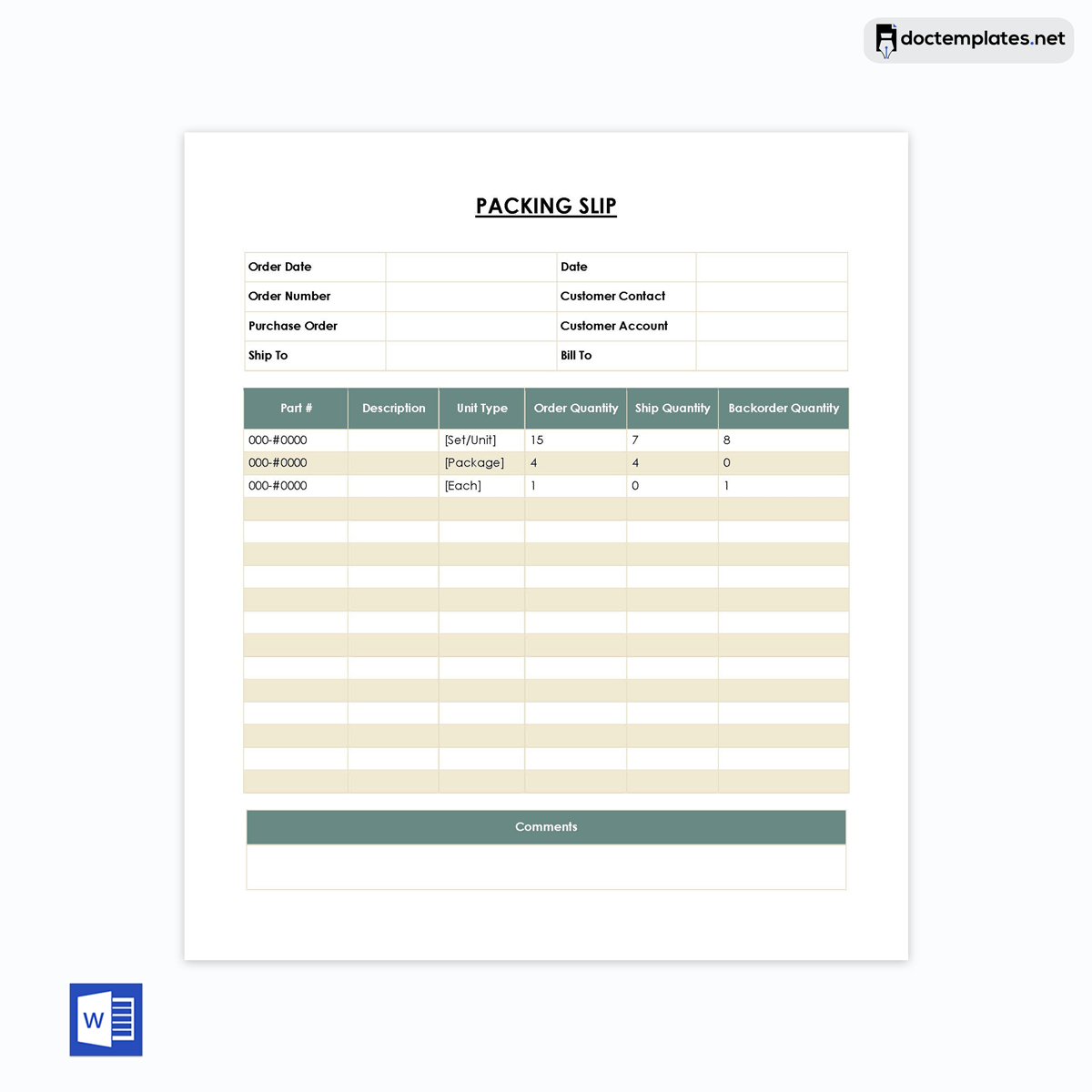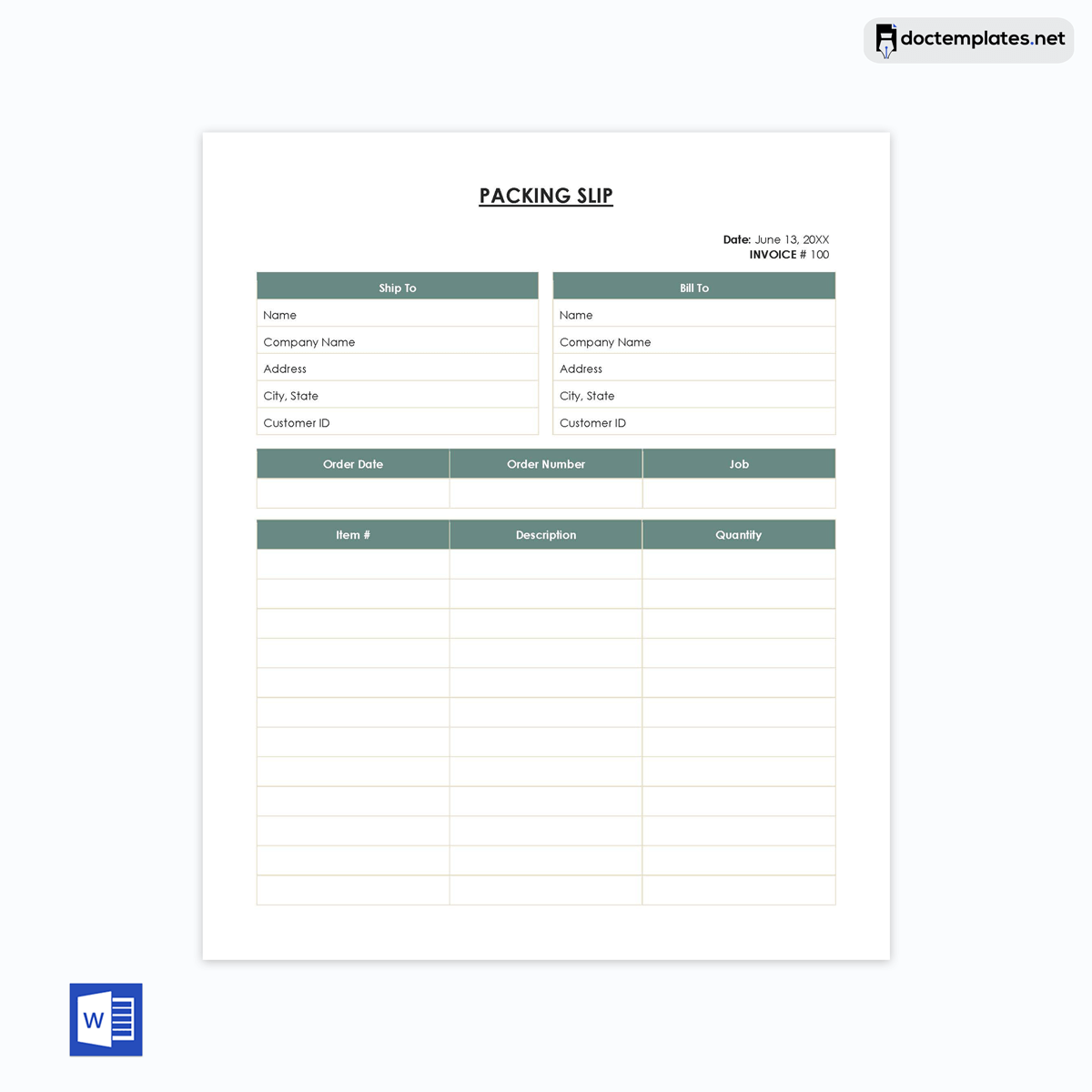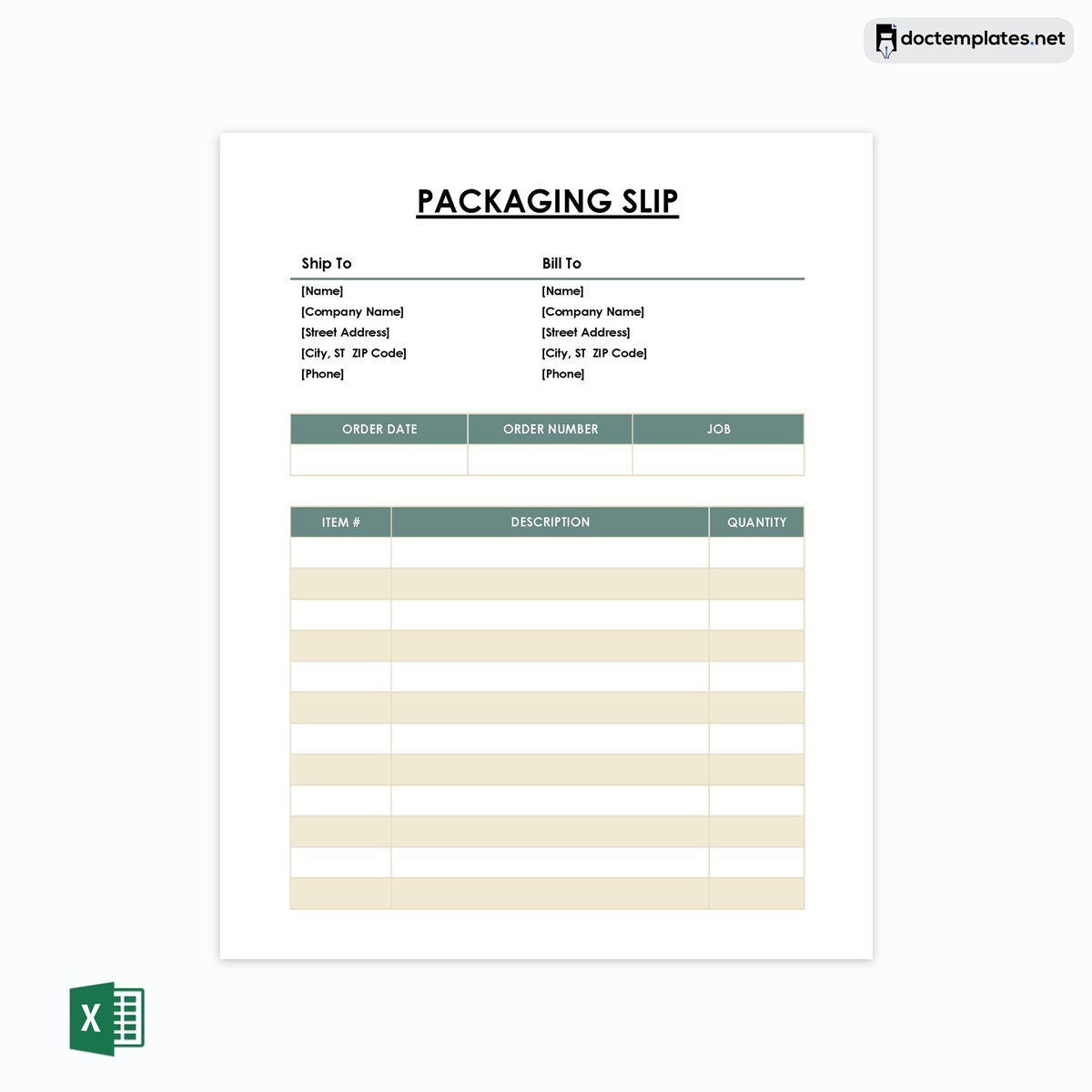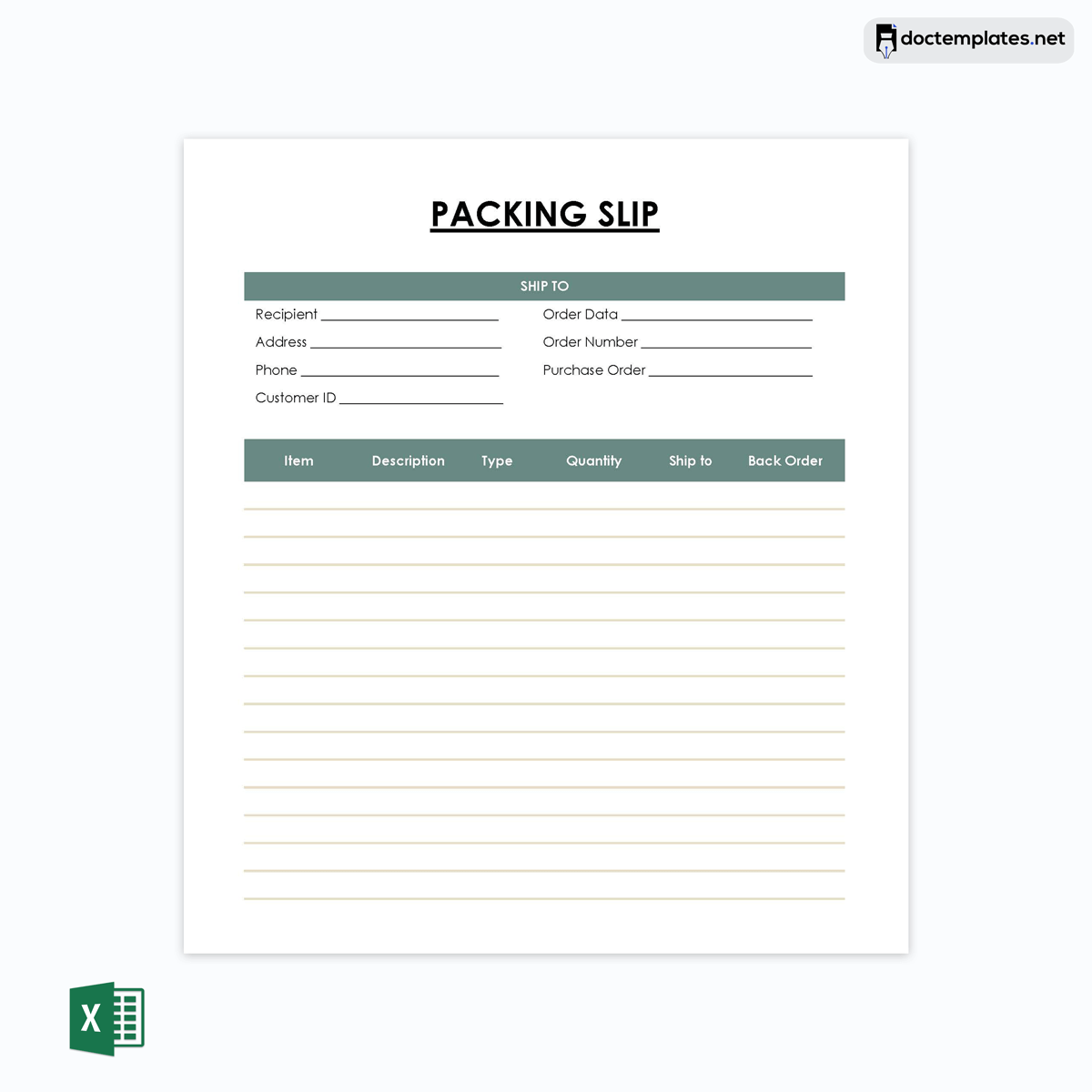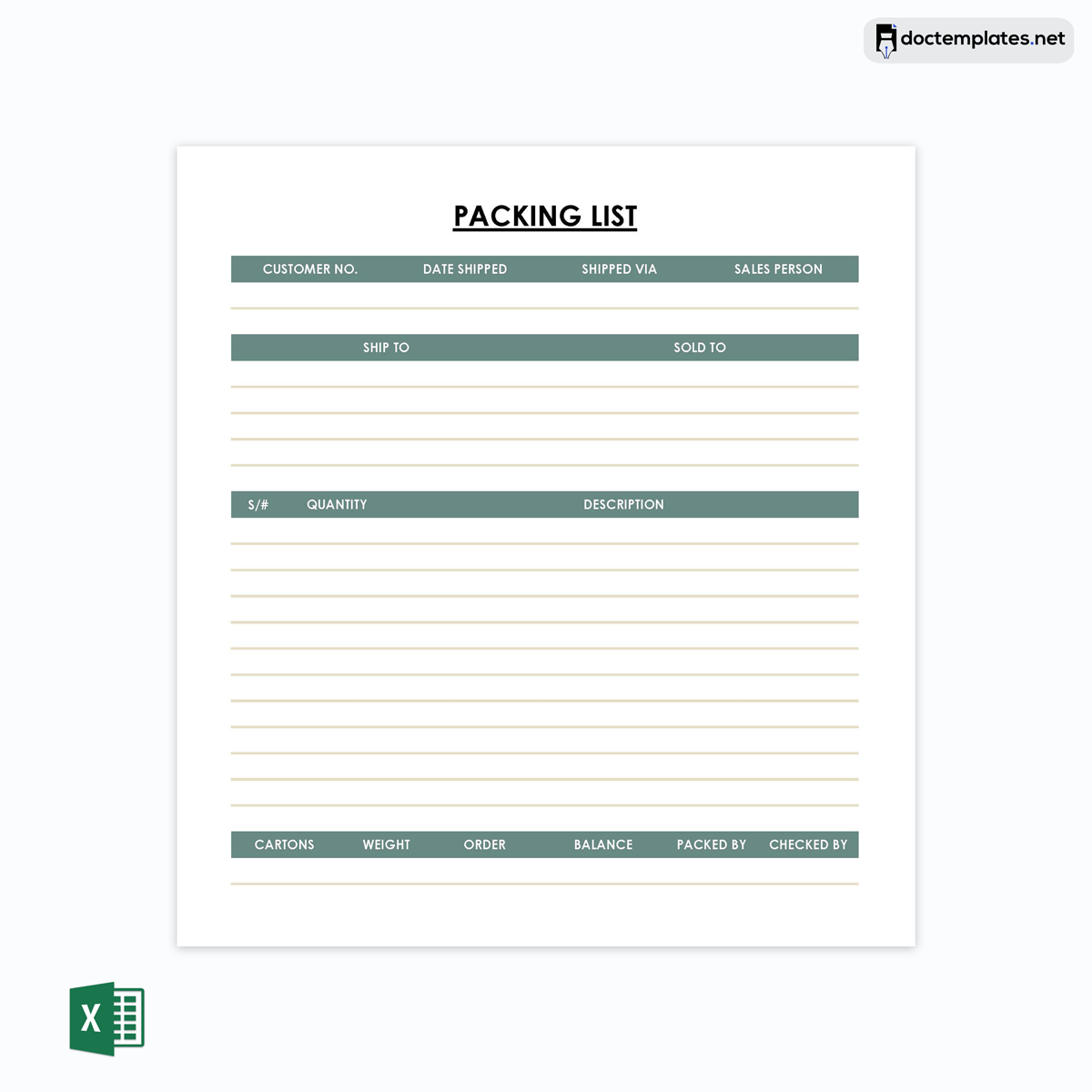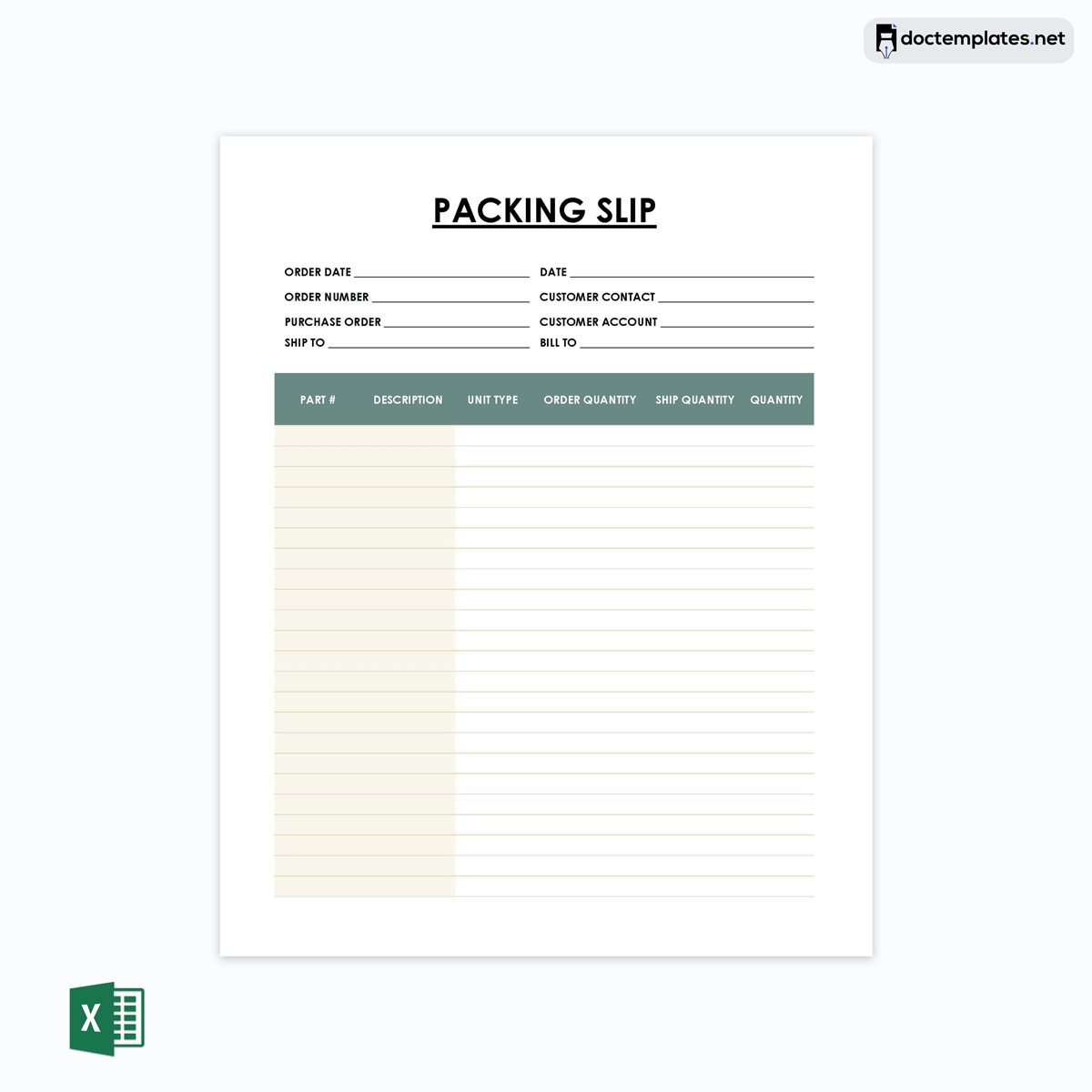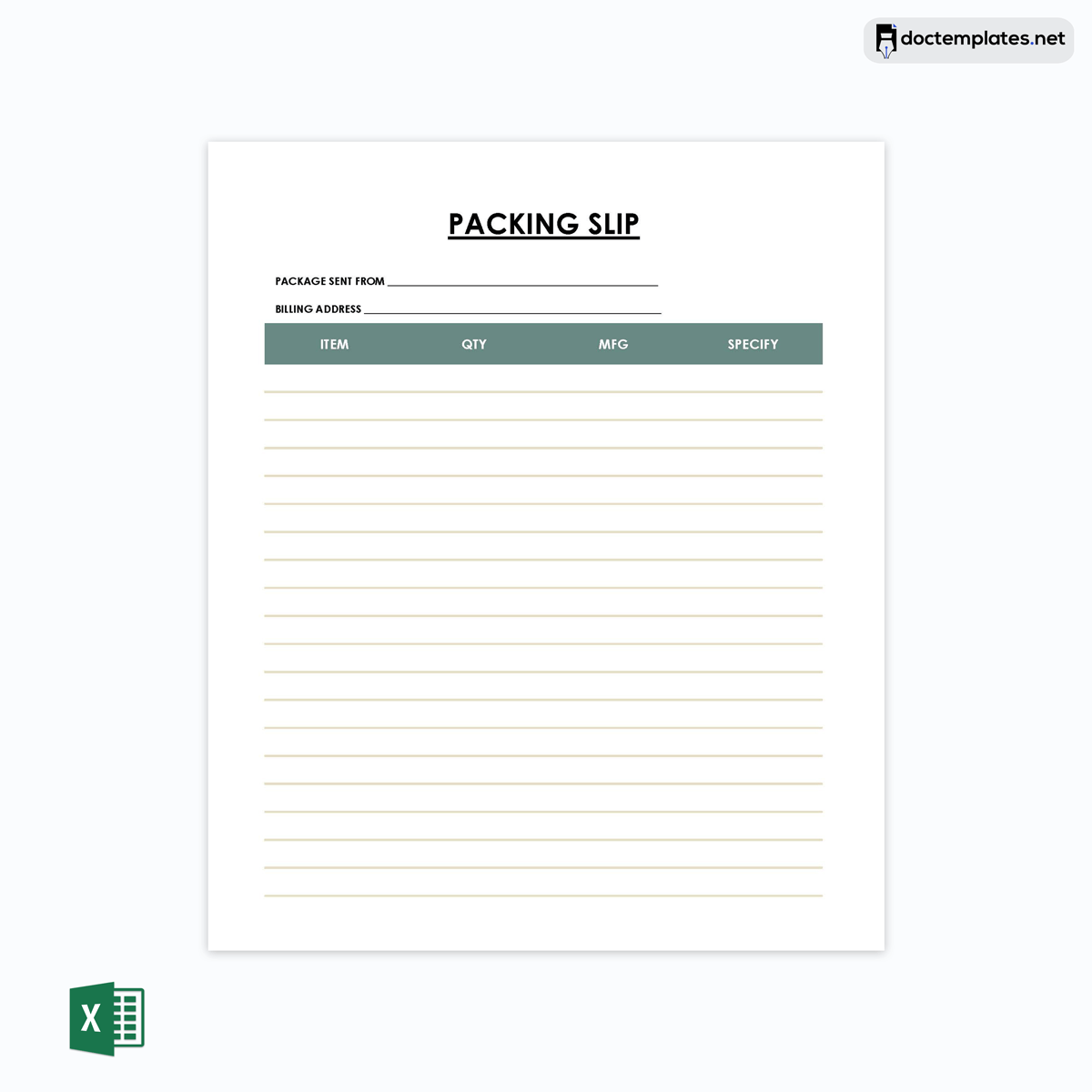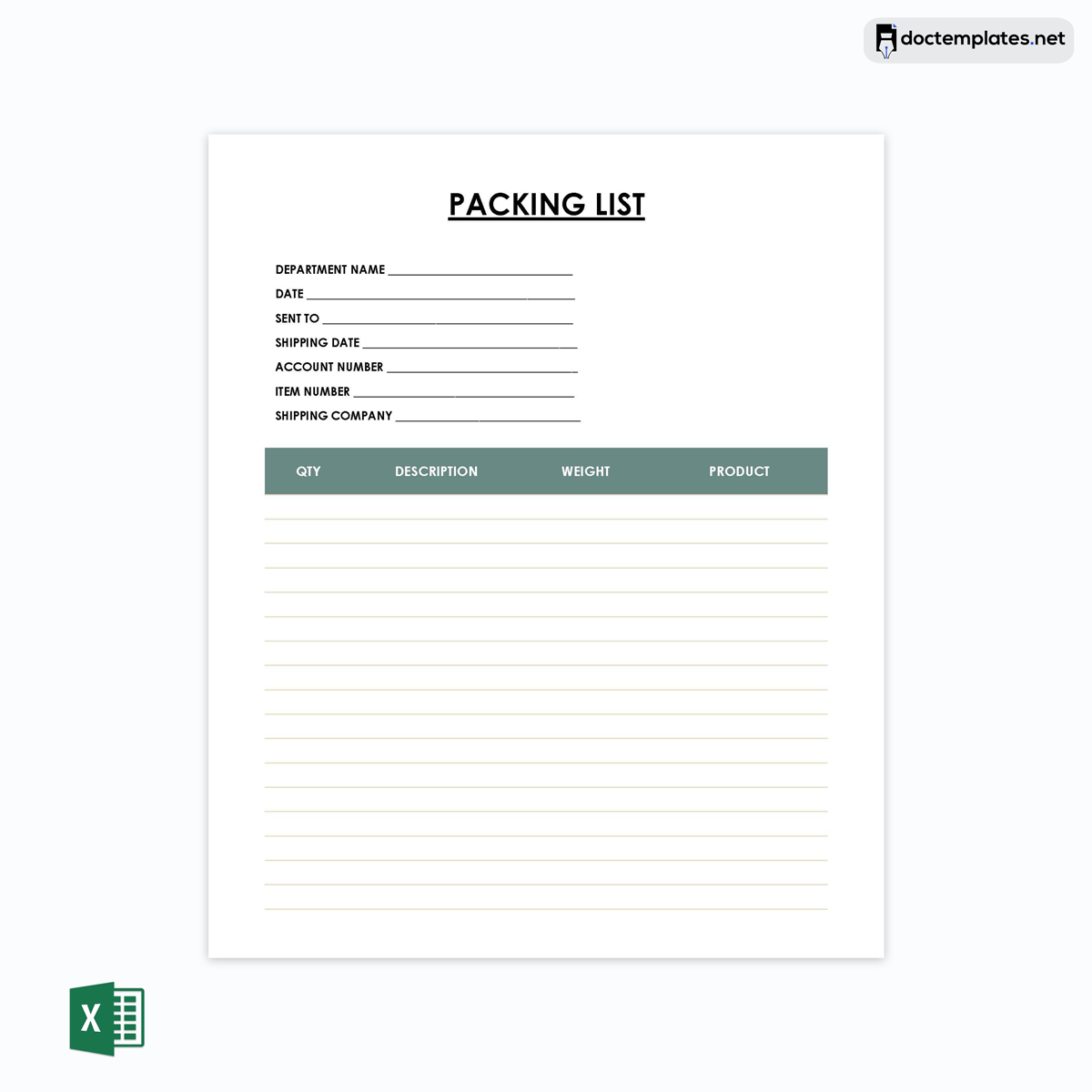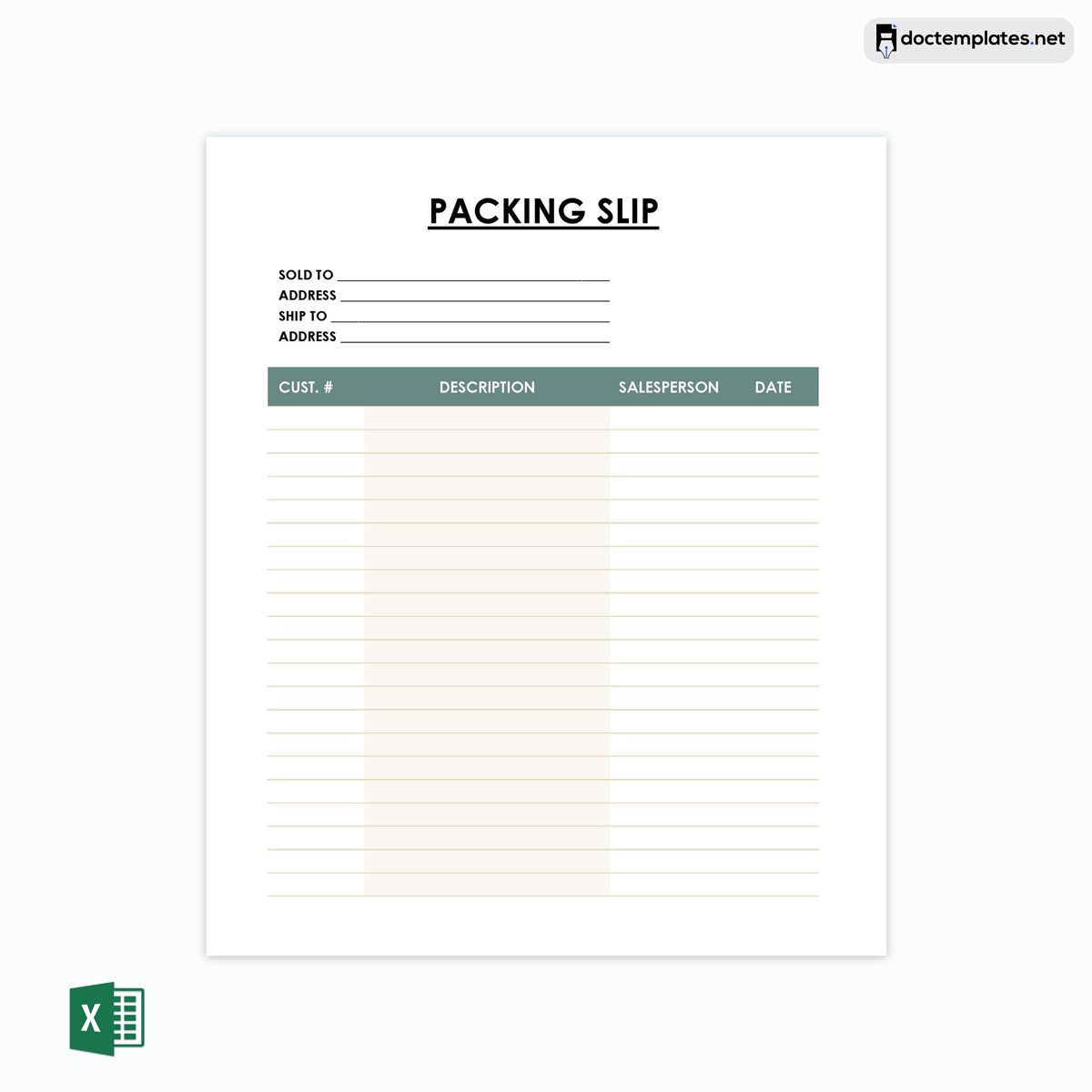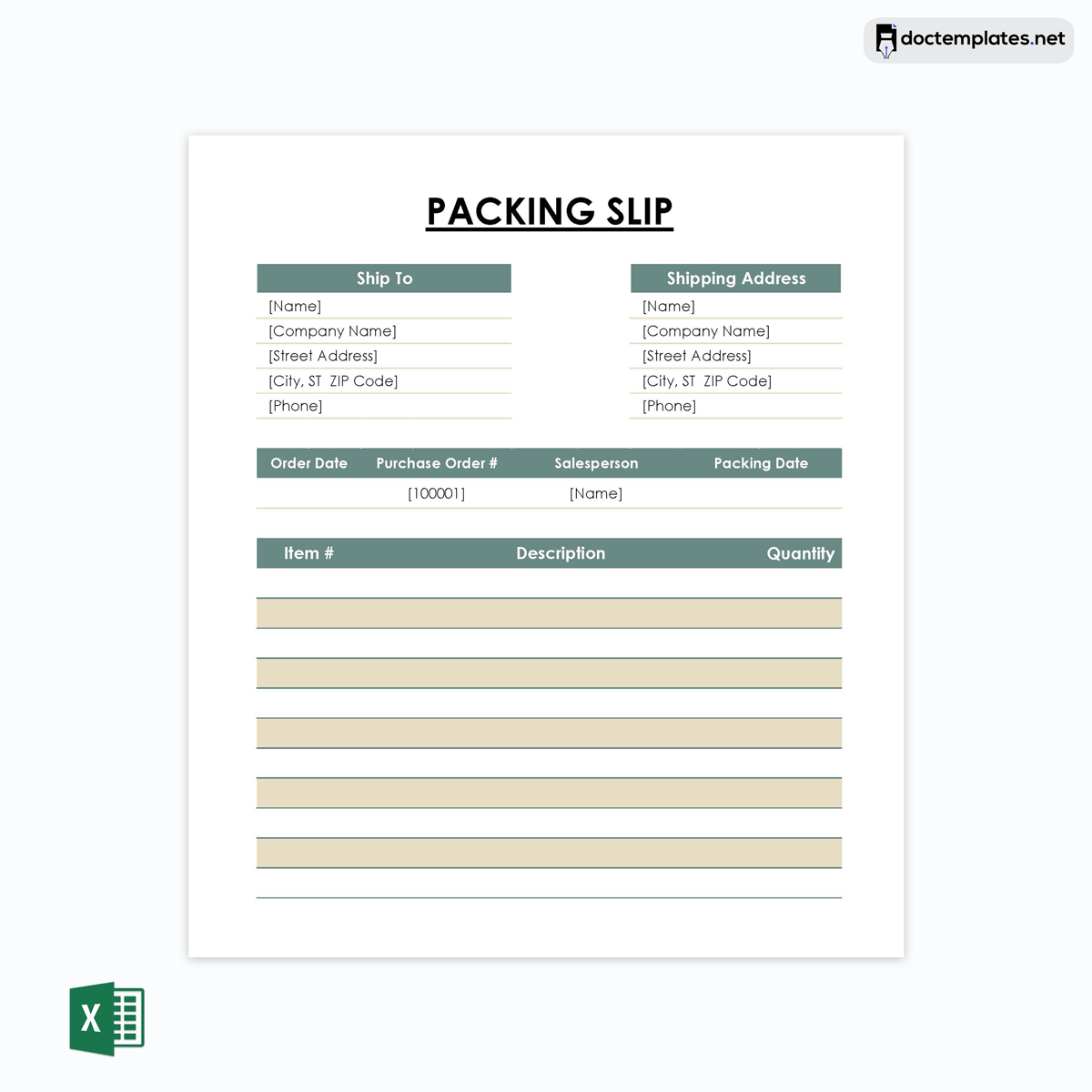A shipper/shipping company must prepare and send their shipments in the safest way possible. The shipment’s safe arrival at its destination largely depends on how the company packs and dispatches it. This is why it is imperative to have the correct packing list.
It can help the shipper avoid liability for delivering damaged or lost products. In addition, with a duly filled list, they will be aware of the shipment’s progress from packaging to processing, loading to unloading, allowing them to keep track of any delays and avoid situations where the shipment is held for clearance longer than necessary. This also helps them avoid unnecessary inspections, storage charges, and other additional or hidden charges.
The article explains in detail a shipping list, including the benefits of creating/having one and what to include in the packing list template.
Shipping Packing List Template
A packing list is an effective tool that you can use to track your shipments and ensure that all your shipments are handled properly and delivered on time. However, creating a clear, detailed, professional document each time you send a consignment can be overwhelming.
Therefore, we have compiled several templates you can download, customize and print for your convenience. Whether sending out a single shipment or coordinating multiple shipments over time, it can help you avoid frustrations and save you much time.
What is Shipping/Packing List?
A shipping list is a document a company or shipper prepares to indicate the shipment’s cumulative content and relevant details.
These lists have numerous applications, the most common being an inventory consolidation point that can facilitate order fulfillment and supply chain management.
Packing lists are typically found inside the packages or on the packing box. They itemize what is in the shipment, including the unit items, weight, quantity, unit price, total value, and description.
Other information about the package can also be included to help the receiver easily identify it. This includes shipping to and from addresses, tracking number, carrier number (if applicable), order number, company logo, personalized messages, and other pertinent information. It is also essential to include special instructions to ensure the shipment is handled correctly during transit.
Packing lists can take different forms. For example, some companies prepare a table based on their inventory records, while others may use a spreadsheet for their inventory consolidation point. They may also use an Excel or online template to maintain and print them, which is the most efficient and effective way of preparing shipping lists. Regardless of the form of the list you use, make sure it includes all the essential information.
Alternative names for a shipping/packing list include:
- A bill of parcel
- Waybill
- Packing slip
- Unpacking note
- Delivery list
- Delivery docket
- Customer Receipt
- Manifest
Why is Shipping List Used?
Shipping lists are essential to streamline supply chain processes as they can eliminate errors and save time and money. Without good packing lists, you may incorrectly add or omit items from your shipment, leading to delays or additional charges.
In addition, they are significant for international trade as they provide actual proof of the shipment’s content on the documents and customs declarations. Freight forwarders or transporters also use it to prepare a Bill of Lading, which acknowledges the export or import shipment receipt.
It is necessary to ensure that your shipping list matches your commercial invoice. This is because a commercial invoice is required for customs clearance, and the contents of your shipment are verified against your commercial invoice.
If there are discrepancies between these two documents, your shipment can be delayed, or additional costs could be incurred. Other benefits of using it include the following:
Helps identify lost/damaged cargo
A shipping list contains information about the shipment’s content, making it easier to identify damaged or lost packages.
Ensures that all the items are in the shipment
A packing list and a commercial invoice will help ensure that all items are accounted for and loaded into the cargo. This prevents under or overcounts and eliminates the possibility of liabilities and additional costs.
Informs about the package’s content
Packing lists provide information about the package’s content and handling requirements. This allows your shipment to be shipped and handled according to standard procedures. Additionally, the slip usually details the package’s contents, when it was shipped, and from where. As such, customers can use it to check off items they have received vs. what they ordered. They can also use it to track upcoming orders if there are any.
Tracks the items
A packing list allows you to track your shipment from when it is loaded until it reaches its destination or is delivered. In addition, it gives you access to current information about your consignment’s movement, which is helpful if you need to track the location and status of your package.
Permits inspection by customs
Packing lists make it easy for the customs department to verify your consignment’s content, preventing unnecessary inspections from government agencies and delays in customs clearance.
Besides, by correctly filling out your shipping list, you can avoid extra storage fees levied by the customs department when your shipment is held for inspection beyond the time allowed.
Estimates the value of the shipment
Besides providing information about the shipment’s content, the packing list also estimates the value of the items loaded in a package. This is essential, especially for international trade, as the value of a package determines its customs duties.
Packing List VS. Other Packing Documents
As the name suggests, a packing list is used to consolidate and record the contents of a shipment, which will then be forwarded to a central database or work order management system. Therefore, it is paramount to distinguish it from other packing documents, such as an invoice, a waybill, and a delivery note, as they differ in terms of purpose and content.
The following is a brief comparison of it with other packing documents:
An invoice
Packing lists and invoices serve different purposes. An invoice documents the sale of products or services between two parties and does not detail what is contained in the package. Instead, it is typically the financial document of the order, detailing information such as how much money each product was sold for, the date of the purchase, payment terms, and the payment method.
Also, all businesses usually issue customer invoices, whereas not all businesses use packing slips. Moreover, packing slips and invoices may sometimes be intended for different parties. For example, packing slips are intended for the party receiving the package, while invoices are usually sent to the party making the payment.
However, it is helpful to note that you will generally get both documents if you order something for yourself.
A waybill
A waybill differs from a packing list in terms of content. A waybill documents the transportation of goods by a carrier, such as a trucking company. Information on waybills typically includes the shipping and consignee’s information, the freight charges, instructions and special requests for freight forwarders, and any other relevant details about the shipment. Such companies also use waybills for internal record-keeping and control.
Therefore, unlike waybills, the former usually do not contain important information about carriers or freight charges.
A delivery note
Delivery notes are similar to packing lists in that they are used to record the movement of goods. However, while delivery notes detail the arrival of the goods, the former details the outbound movement. In addition, delivery notes typically contain information on who received a product and when it was received, including the buyer/receiver’s signature. Once the receiving party signs it, it is usually returned to the seller as proof of delivery.
Fundamental Components to Include in Shipping Packing List Template
A well-written packing slip will ensure you ship products to customers effortlessly and on time. Therefore, the exact details to be included in it will depend on your business and the products you ship. You can use templates, which are essential documents to guide you when creating packing lists.
With them, you do not have to create them from scratch, saving time and effort. This is because they illustrate the fundamental components you must include, such as order date, PO number, shipment origin and destination, customer details, list of items, payment details, shipment weight, etc. However, you can personalize these components to make your specific business’s supply chain management smoother and more effective.
To create a comprehensive document, consider incorporating the following essential elements:
Step 1: Start with the shipping point of origin and destination
Firstly, this section of the template includes the delivery point of origin and destination details and the location from which and to which the shipment is being sent.
For example:
If you ship an item from Los Angeles, California, to Springfield, Missouri, your shipping point of origin would be Los Angeles, and your destination would be Springfield.
Additionally, using the name of a nearby city if the correct city is unknown is also acceptable.
Step 2: Include the order date
Secondly, add a section to capture the date the products are sent. The order date represents a cross-reference point in the supply chain management process. Therefore, the date can be important in determining if there are any cross-orders and whether or not the shipping date is on schedule.
Step 3: Provide the order and customer details
Thirdly, a section to record the order number and customer information should appear in the template. Suppose you ship more than one shipment of an order. In that case, the order number and customer’s information, such as their name and contact information, are essential, as they will help ensure that you process cross-orders correctly.
Step 4: Enlist the items/products
The next component of the template should capture an itemized list of the shipped items. When shipping large orders or where the shipment consists of different products, it is essential to attach an itemized list of the items being shipped. This list helps you identify and confirm what is inside the package, so you can ensure that the products are correctly handled and tracked as they move through the supply chain.
In addition, itemizing all the products in the shipment will help ensure that the customer receives all the items they ordered and will help you clarify any questions they may have regarding missing items.
Step 5: Present an itemized list of out-of-stock items
Then, you should provide a section to record unavailable or out-of-stock products. When some items that need to be shipped are not in stock, you can enlist them in this section of the template. This will serve as a reminder and issue a status report to the receiver of the shipment and allow them to reorder the missing items.
Step 6: Include the number of unit items
This section is meant to record the number of unit items being shipped. This is because when shipping a large order of multiple items, it is vital to record the quantity of each item. This will ensure you know the number of items that have been shipped and whether or not any items are missing from the shipment.
Step 7: Indicate the SKU or UPC of individual items
The next step when creating the template is adding a section to document the SKU or UPC of the purchased items. Each item’s SKU (Stock Keeping Units) or UPC (Universal Product Code) number is crucial to managing your inventory effectively.
In addition, you can leave space in it to record the type and size of each product in your packing list. This way, you can communicate with your customers if they have any questions or concerns regarding specific details about their order.
Step 8: Add slip or PO number
The slip or PO number on your packing list facilitates easier tracking of a particular order. It consists of a unique identifying alphanumeric code printed on the back of the shipping label. This unique number helps you distinguish one shipment from another, avoiding the possibility of sending duplicate shipments.
Step 9: Specify the pricing information
Next, your template must record the items’ prices. This section can be made such that it records detailed product prices or discount information for the customer. It is important to record the price breakdown as it provides clarity when taking inventory and allows the client to verify that everything was shipped according to the purchase order.
Step 10: Add a section to record the weight of the content
It is crucial to include the weight and dimensions of your items to ensure that your products are shipped efficiently and cost-effectively. In addition, knowing the exact weight of your order helps you determine the shipping method that will be used and whether oversized charges apply.
Step 11: Include shipping instructions (optional)
Next, a section for shipping instructions, also known as “handling instructions,” should be provided in the template. These are specific requirements and details about how the package must be handled throughout the supply chain process.
For example:
The instructions may include whether the product is fragile and should be handled with care or if it is perishable and needs to be kept chilled at all times to prevent spoiling.
Step 12: Add a personalized message section (optional)
A personalized message to encourage customer engagement and feedback can also be added to the template of a packing list. Such messages are significant in building your brand, as customers will feel happy with their purchases.
Step 14: Add your company logo (optional)
Afterward, your company logo can be added to the template. This section can be considered a marketing strategy to create a better brand presence in the competitive market and enhance customer loyalty.
Step 15: Insert a return address
Including the return address of your company or warehouse on the shipping list is essential, as it will help you track your shipment’s status and ensure that it is returned to the correct address.
Frequently Asked Questions
Is a packing list a legal necessity?
A packing list is not legally required unless you ship products that must be shipped under particular requirements. Nevertheless, it is in your company’s best interest to include it with every shipment. It helps you stay organized in the consignment’s tracking process and makes the import/export process seamless for customs and the parties involved.
Why is a packing list essential when exporting goods from a given country?
A packing list ensures that all items included in the shipment are accounted for and helps with post-shipment identification and verification. Packing slips also serve as proof of the inland bill of lading, indicate the information required for the certificate of origin, serve as proof of a material safety data sheet (in case goods are deemed hazardous), and provide much of the details needed by the electronic export information section of the Automated Export System. Furthermore, they are essential to creating a booking with the international carrier and obtaining an international bill of lading. In addition, they help customs brokers to enter itemized goods into the receiving country’s import database. Lastly, shipping lists support reimbursement documents under a letter of credit.
How can I make an export packing list?
Your export packing list must include all the essential details of a typical one. This includes the weight and dimensions of the cargo, the order date, the number of items along with their descriptions, the shipper and exporter’s contact information, consignee contact information, shipping to and from addresses, commercial invoice number, and the volume and weight of the entire shipment. The export packing list should also indicate whether solid wood was utilized to pack the shipment; and, where applicable, provide the necessary fumigation or heat treatment.
Is a packing slip the same as an invoice?
No. A packing list is a document used to list the items being shipped, while an invoice is a document used to record the sale information, such as the price of each item sold, payment terms and method, payment date, etc.
Where do you put the packing slip?
Packing slips are typically placed inside the package that is being shipped. However, some companies may also use a sticker or clear tape to attach it to the outside of the package.
